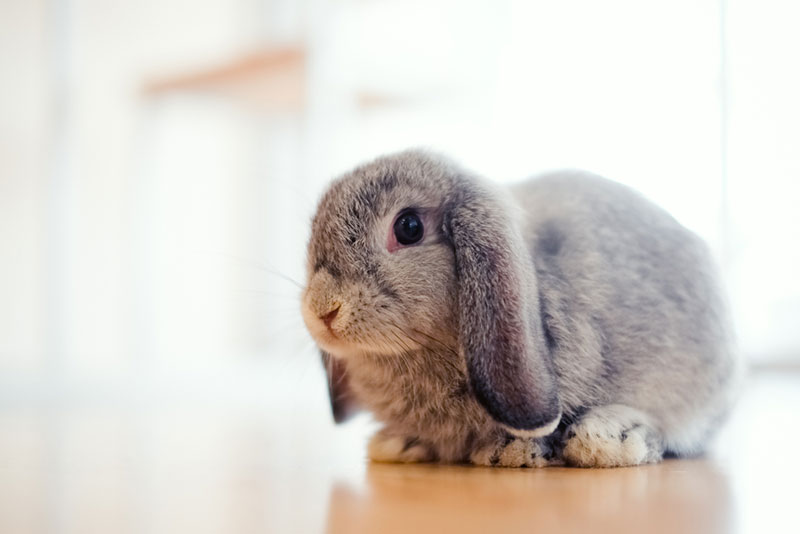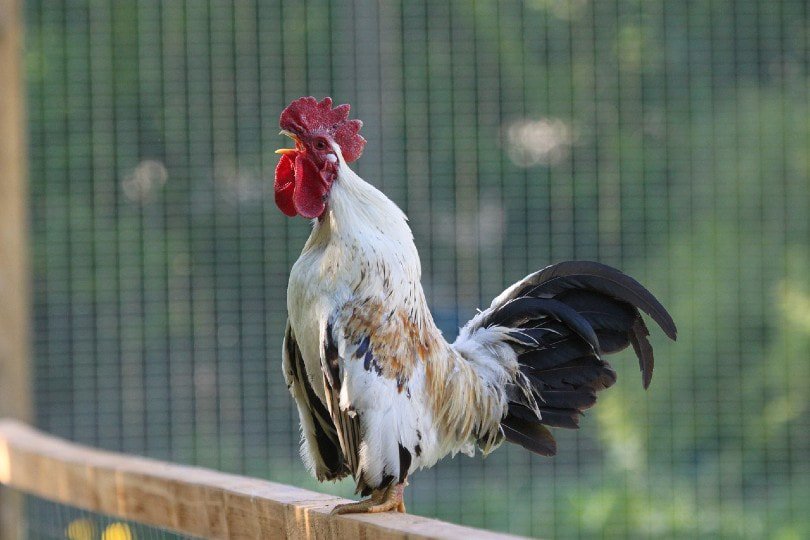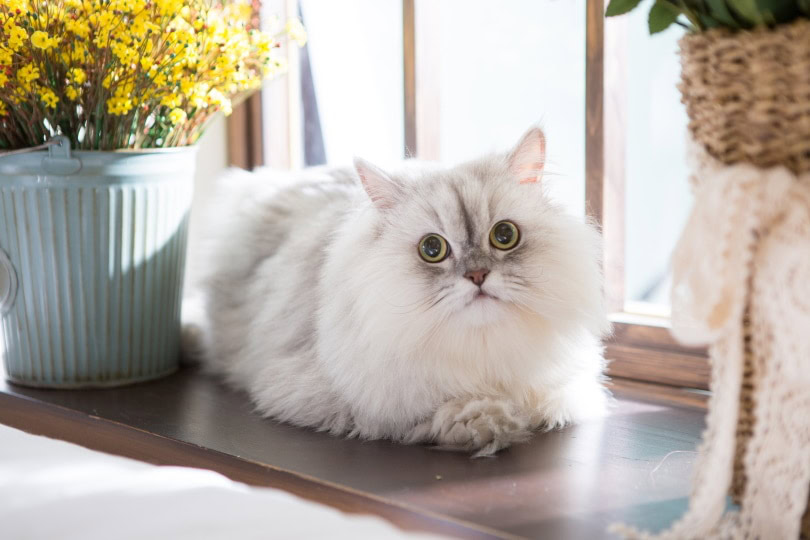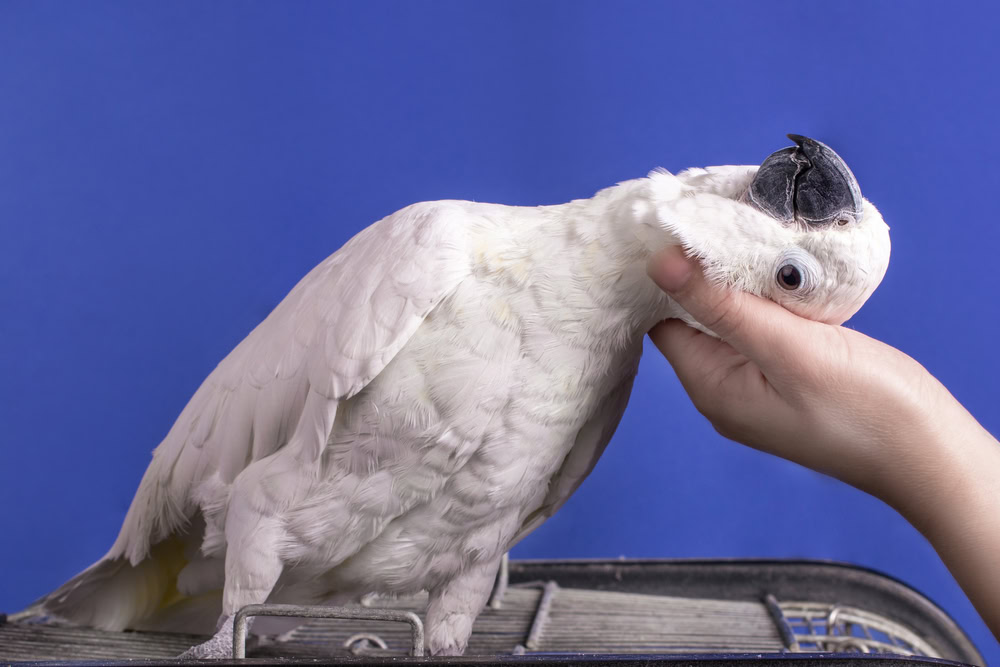VET APPROVED

The information is current and up-to-date in accordance with the latest veterinarian research.
Learn more »Click to Skip Ahead
Most animals use their ears in various ways other than for hearing. By looking at their ears, you can often determine how the animal feels. When it comes to the rabbit’s famously large and glorious ears, they have much to say. So, as a rabbit owner, you can learn what your rabbit is telling you by the position of their ears.
In this article, we’ll discuss 14 ear positions, including five for lop-eared rabbits, to help you determine how your rabbit is feeling.

The 9 Standard Rabbit Ear Positions
1. Upright and Relaxed
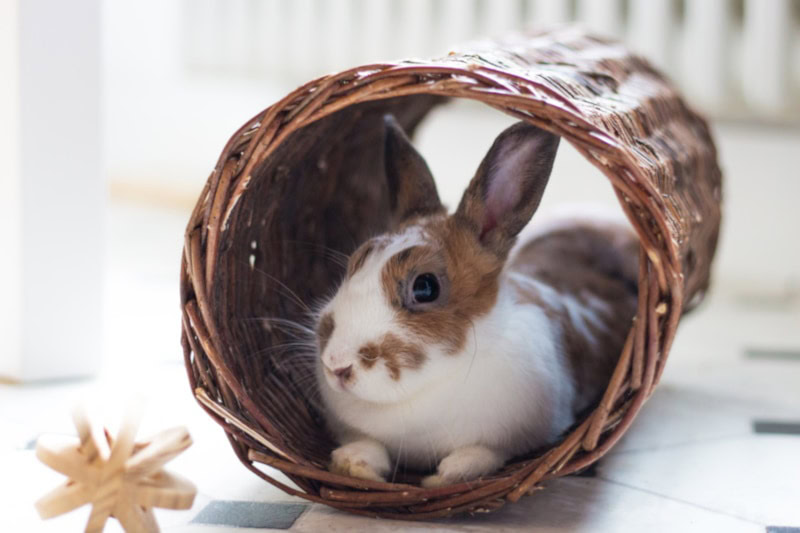
This is probably the most common ear position for rabbits. The ears are held wide apart and generally look relaxed and not rigid in any way. They aren’t necessarily pointed in any direction.
They typically move and bob around when the rabbit moves and hops. Their ears indicate a relaxed, confident, and happy bunny.
2. Upright and Rigid
This is a rabbit on high alert: They’ve heard a noise or are sensing something, so they stick their ears up and hold them rigidly, usually facing the direction where the perceived threat is coming from.
They also likely stand on all fours or sit upright on their hind legs. You might occasionally notice your bunny hopping and freezing in this rigid position until they calm down or when the threat is gone.
3. Slanted Forward
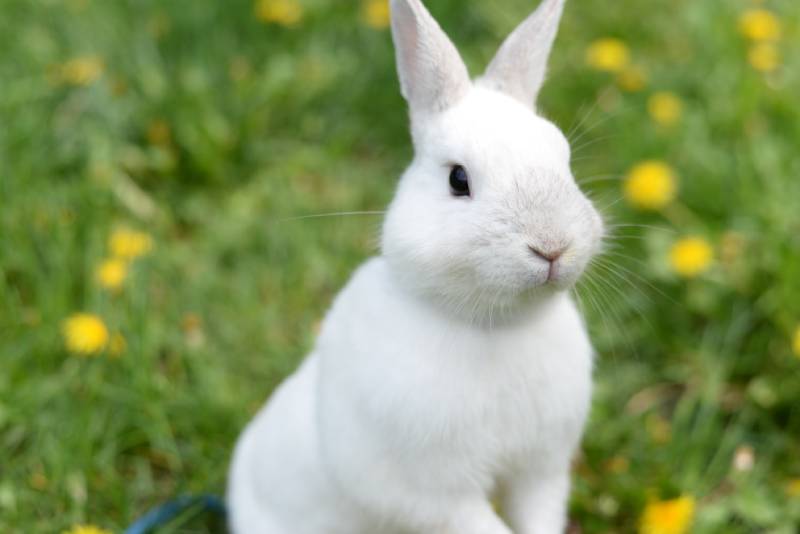
When your rabbit has slanted their ears forward over the head, they are curious yet cautious. Their nose will go into overdrive, sniffing whatever it is that has them so curious. They will also cautiously and slowly advance to investigate.
4. Slanted Backward
This position shows anger! The ears are rigid and face toward the back at a 45° angle. The inside of the ears are turned back and down, and you should notice the tail moving up and the chin jutting out.
Your rabbit might also growl, so they are getting ready to bite and scratch. Most rabbits become aggressive out of fear or because they are being territorial.
5. Lying Together Along the Back

When the ears are lying along the back, the rabbit is usually relaxed and content. The ears tend to be close together and look loose rather than rigid.
Typically, the rabbit’s body language is also relaxed, which indicates that they feel safe.
6. Lying Apart Along the Back
This position is similar to the previous one, except the ears are spread wide apart while lying along the back. The rabbit is in a submissive pose in this case. The ears are stiff rather than soft, and the rabbit will lie on the ground with their legs beneath them.
Remember, if the ears look soft and close together, they are relaxed. In contrast, if the ears are stiff and wide apart and the rabbit appears to have a stiff body while crouched on the ground, they are likely scared and submissive.
7. One Ear Up

Beyond looking adorable, when a rabbit raises only one ear, they are essentially paying attention but not really on alert.
They might have heard something they are paying attention to, so the ear will swivel around to focus on it, but the body language will still be relaxed.
8. Constantly Moving and Swiveling
When a rabbit seems to be swiveling their ears around and apart from each other—in other words, each ear swivels on its own—they are trying to pick up sounds. This is more of an investigative approach. The rabbit isn’t on high alert but is scoping the environment for possible threats.
When a rabbit is on high alert, they might swivel their ears around for the same reason, but they will be rigid.
9. Shaking

A rabbit shaking their ears can mean several things, so you need to consider their body language too. If they shake their ears multiple times instead of just once, they might have itchy ears. They might additionally scratch their ears with their hind legs and grab them with their front paws to groom them. If this happens too often, you should see your vet in case of an infection or ear mites.
When a rabbit does what’s called a binky, they do a funny jumping-twisting action as a way to express their excitement. Sometimes, rabbits will do a mini binky, which might just involve shaking their heads and shoulders.
Finally, some rabbits shake their ears as a sign to be left alone. This typically happens when they are busy doing something like exploring, and you attempt to pet them.

The 5 Lop-Eared Rabbit Ear Positions
10. Relaxed
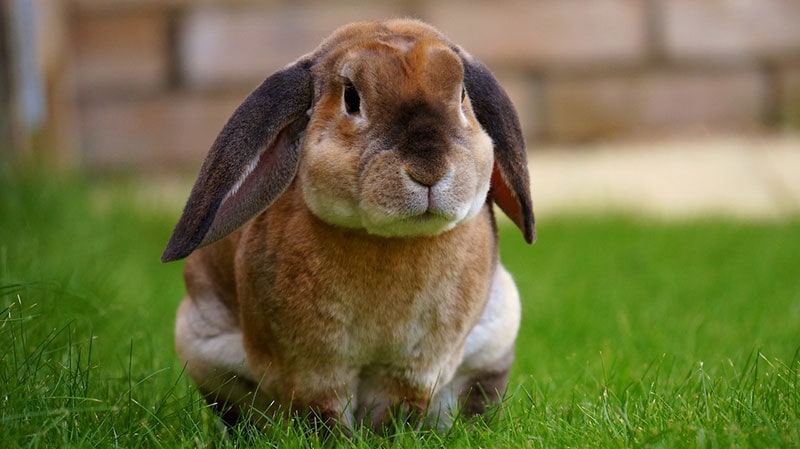
The ears of lop rabbits will bounce as the rabbit hops around, which indicates that they are relaxed and comfortable.
It’s more challenging for most lop rabbits to move their ears, and they can’t lift and swivel them the way the other rabbits can.
11. Swing Forward
This is similar to when a rabbit with upright ears slants their ears forward, though a lop rabbit will raise their ears a little and push them forward.
This indicates a curious yet cautious rabbit, such as when they hear something or an object is nearby that they aren’t sure about.
They’ll slowly and carefully approach the subject of their curiosity, and their nose will be sniffing quite vigorously.
12. Swing Backward
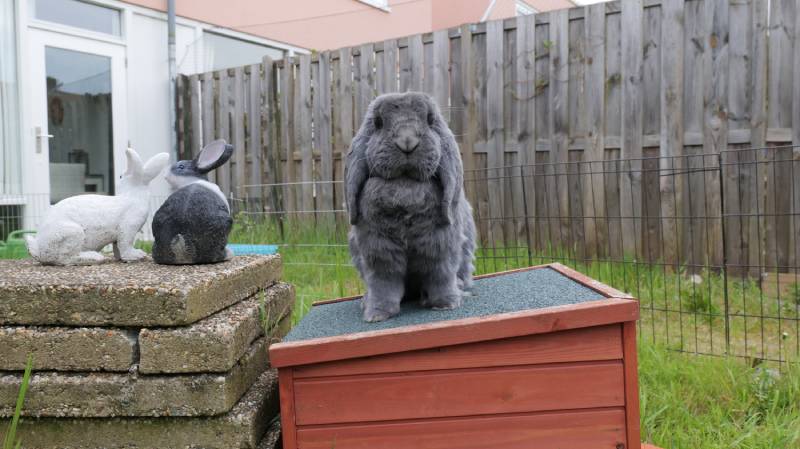
When lop ears lift their ears and swing them up and back, the ears are held rigid and toward the back, which is a sign of fear or aggression.
The body language is easier to follow because many lop ears don’t have much control of their ears. So, also look for a jutting chin, raised tail, and growling.
13. Airplane
This isn’t a common ear position for lop rabbits because it takes a great deal of control, but those that can do it will hold their ears horizontally, resembling airplane wings.
This is a sign of a happy and excited bunny, and you may hear them make a buzzing sound. However, it can also indicate that the rabbit is on alert and trying to identify a threat.
14. Rotated
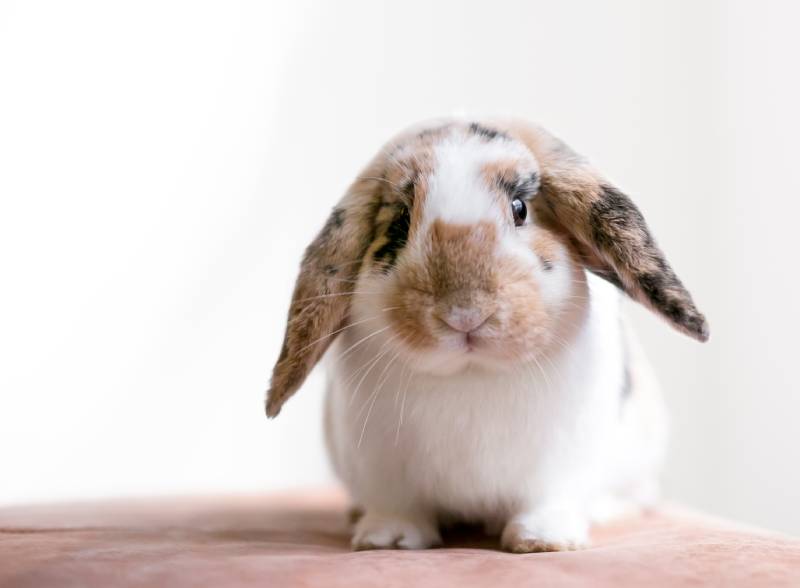
Some lop rabbits can rotate their ears slightly. If you notice your rabbit trying to rotate one or both of their ears, they are curious and attempting to listen carefully to something.
You might also notice your lop tilting their head slightly while rotating the ear on that side. This signifies that your lop rabbit is trying to hear the sound better.

Final Thoughts
Rabbits with straight ears can swivel them 270° to listen for sounds from any direction. However, since rabbits don’t make much sound or have long expressive tails like dogs or cats, you need to go by the ear positions and body language to determine their mood.
Remember that while you can use their ears to judge what might be happening with your bunny, you also need to consider what they are doing physically. Hopefully, you now have a much better grasp of how your bunny feels, which can only strengthen your bond.
Featured Image Credit: Paisit Teeraphatsakool, Shutterstock
